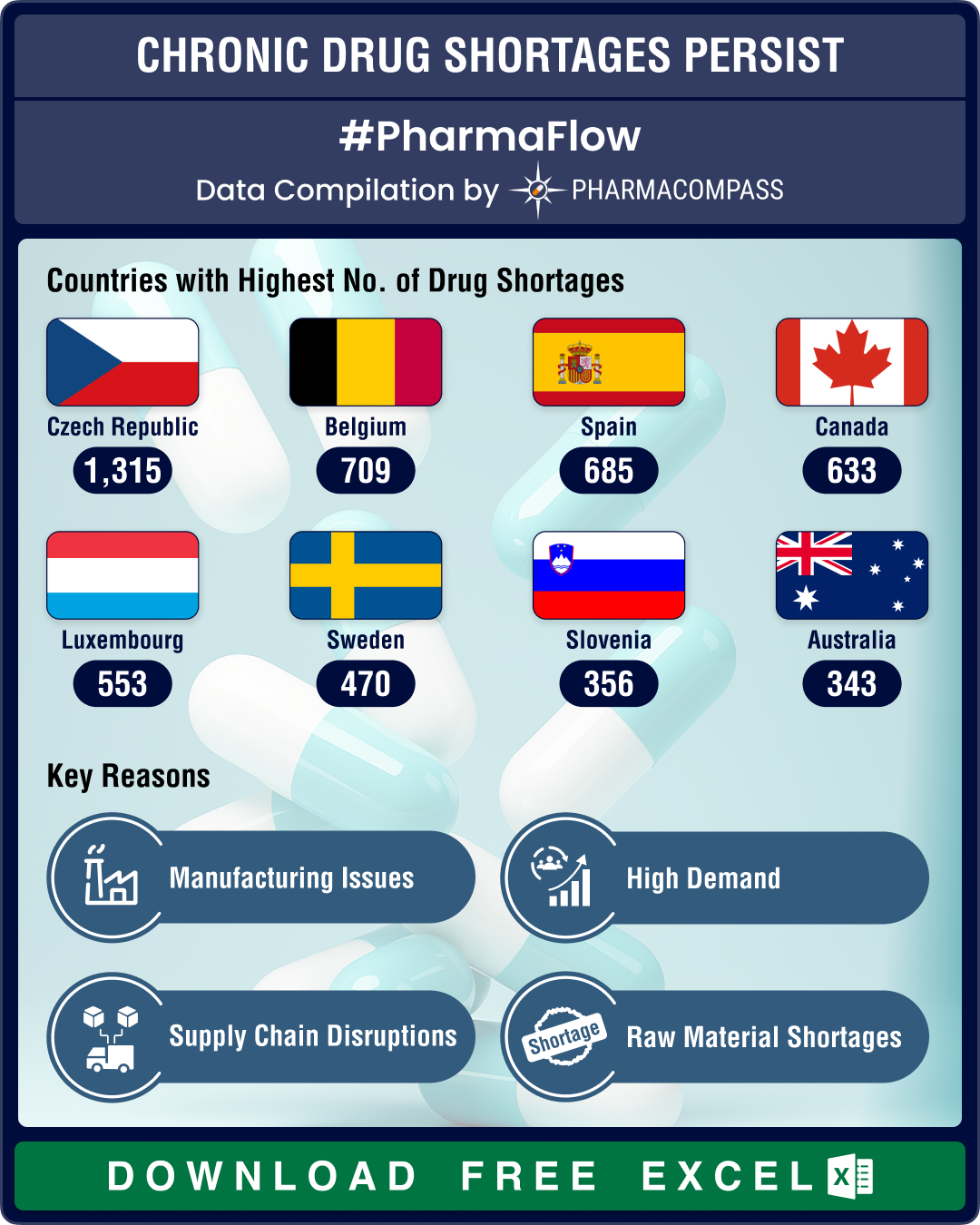
By PharmaCompass
2025-05-22
Impressions: 3907
The pharmaceutical industry in the United States continued to grapple with drug shortages during the first quarter (Q1) of 2025. According to the American Society of Health‑System Pharmacists (ASHP), the total number of active shortages stood at 270 as of March 31, 2025 — only slightly below the 277 reported in September 2024, but down 16.4 percent from an all‑time high of 323 reported in Q1 2024.
These numbers imply that while dramatic surges in drug shortages may have subsided, underlying vulnerabilities in manufacturing, supply chains, and raw‑material sourcing continue to frustrate efforts towards a durable resolution.
A deeper analysis of these drug scarcities reveals that 41 percent of the 270 active shortages first emerged in 2022 or earlier. This implies that many of the current disruptions have become chronic in nature and are exerting pressure on pharmacy operations.
View Our Interactive Dashboard on Drug Shortages So Far in 2025 (Free Excel Available)
CNS drugs dominate with 49 meds in short supply; antimicrobials face shortage of 39 drugs
Class‑specific analysis reveals that central nervous system (CNS) agents remained the most disrupted category, with 49 distinct CNS drugs having faced scarcities during Q1. This group spans anxiolytics (anti-anxiety drugs) such as clonazepam and flurazepam, sedatives like lorazepam and midazolam, and stimulants such as methylphenidate and lisdexamfetamine. These shortages pose two challenges — controlling seizures and managing sedation in acute care settings.
After CNS agents, antimicrobials was the second‑largest category, with shortages affecting 39 drugs. Key antibacterial and anti-fungal agents such as cefotaxime sodium powder for injection, clindamycin phosphate, rifampin, and metronidazole find themselves on ASHP’s active‑shortage roster, threatening both routine hospital protocols and emergency sepsis management.
Fluids and electrolytes occupied the third spot, with 29 items facing shortage in Q1 2025. Hormone agents, including insulin analogs, ranked fourth with 24 drugs in short supply.
Chemotherapy medications rounded out the top five categories, with 23 antineoplastic agents (a broad class of medications used to treat cancer) flagged as actively constrained in Q1 2025. Notable shortages included azacitidine, carboplatin, methotrexate, and streptozocin.
View Our Interactive Dashboard on Drug Shortages So Far in 2025 (Free Excel Available)
US faces 26 new shortages; Pharmacopeia list warns of 100 vulnerable medications
The first quarter saw the emergence of 26 new shortage declarations, emphasizing that even drugs previously deemed reliably sourced can fall into scarcity. The US has been facing a shortage of attention deficit hyperactivity disorder (ADHD) drugs since 2022. The new shortages included ADHD transdermal patch methylphenidate, peginterferon alfa‑2a (Pegasys) used in chronic hepatitis B and C, and bacitracin ophthalmic ointment.
The fragility of the pharmaceutical supply chains has been particularly evident in the aftermath of natural disasters. Hurricane Helene’s flooding at Baxter’s Marion, North Carolina, facility deeply affected IV‑solution supply lines. Baxter supplies roughly 60 percent of the US’ IV fluids and the ASHP report listed “hurricane” as the reason behind nine percent of drug shortages, as of January 2025.
Regulatory and policy interventions continue to evolve. The US Pharmacopeia’s inaugural Vulnerable Medicines List, launched in 2025, identifies 100 drugs at the highest risk of future shortages, with a particular focus on injectables (comprising 71 percent of the list) and essential hospital care.
Antibiotics, medications for pain management and oncology are the other drugs on the list. Although 61 percent of these vulnerable medicines were not in active shortage at the time of listing, their inclusion is intended to galvanize manufacturers and purchasing organizations to bolster inventories.
Meanwhile, the Government Accountability Office in the US has called on the Department of Health and Human Services (HHS) to establish a formal coordination mechanism, warning that elimination of the HHS supply‑chain coordinator role in May 2025 risks fragmenting federal response efforts.
View Our Interactive Dashboard on Drug Shortages So Far in 2025 (Free Excel Available)
Global shortages mirror US patterns; Europe launches monitoring platform
Globally, we notice comparable trends. For instance, Europe has rolled out the European Shortages Monitoring Platform (ESMP) this year in order to centralize shortage reporting across member states. Critical‑medicine shortages in the EU — in areas such as oncology, ADHD, and critical care analgesics — mirror US patterns. The European Medicines Agency’s shortage list currently holds 37 human drugs.According to Health Canada’s May 12, 2025 update, its Tier 3 list had 18 drug shortages that are considered to have the greatest impact on Canada’s drug supply and health‑care system. Tier 3 designation is based on medical necessity and minimal availability of alternatives.
In hematology and oncology, scarcity of essential drugs like Oncaspar for acute lymphoblastic leukemia, idarubicin and lomustine for leukemias and brain tumors, anagrelide for thrombocythemia, and preservative‑free methotrexate for various malignancies underscore the impact these drug shortages can have on treatment.
View Our Interactive Dashboard on Drug Shortages So Far in 2025 (Free Excel Available)
Our view
The global pharma supply chain is dealing with a fresh wave of uncertainties, especially with the likelihood of tariffs on drugs imported into the US. Analysts warn that the proposed pharmaceutical tariffs could exacerbate supply issues.
Over 50 percent of drugs used in the US are manufactured abroad. Generic sterile injectable drugs — like chemotherapy medications and IV saline — are particularly vulnerable due to their complex manufacturing processes and low profit margins. Generic drugs (which account for 90 percent of prescriptions filled in the US) could face increased pressure, as many rely on raw materials from China and India. This could result in more severe drug shortages in the future.
The PharmaCompass Newsletter – Sign Up, Stay Ahead
Feedback, help us to improve. Click here
Image Credit : DRUG SHORTAGES: A GLOBAL CRISIS by PharmaCompass license under CC BY 2.0
“ The article is based on the information available in public and which the author believes to be true. The author is not disseminating any information, which the author believes or knows, is confidential or in conflict with the privacy of any person. The views expressed or information supplied through this article is mere opinion and observation of the author. The author does not intend to defame, insult or, cause loss or damage to anyone, in any manner, through this article.”








